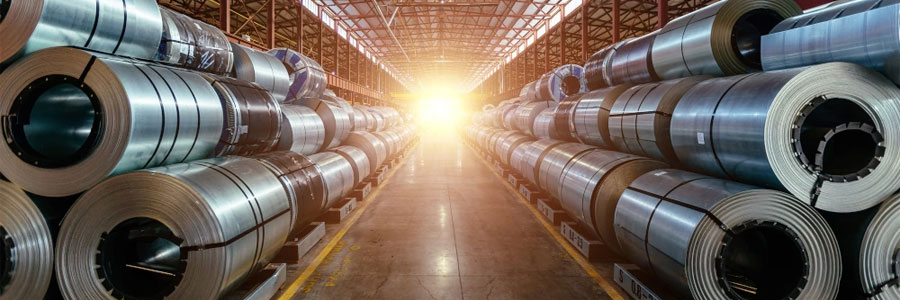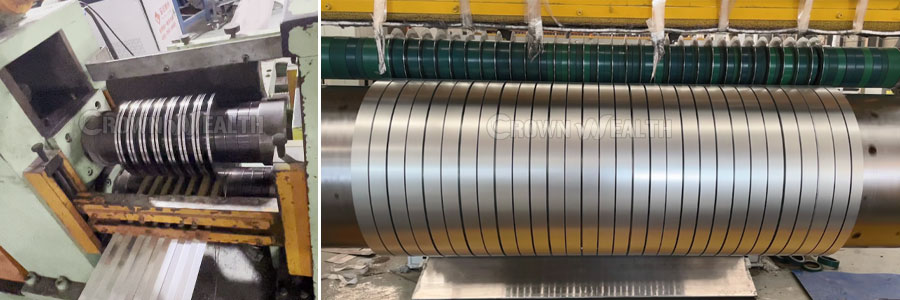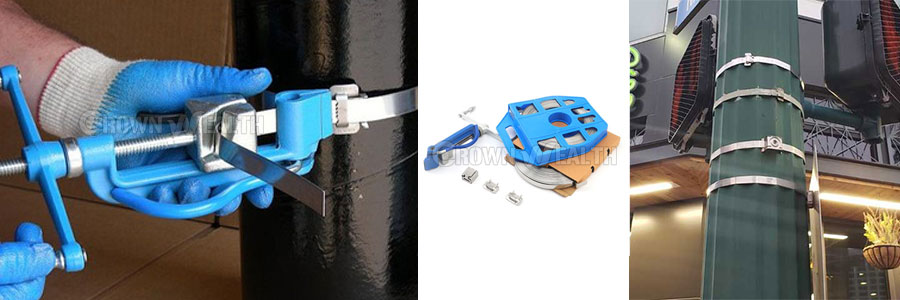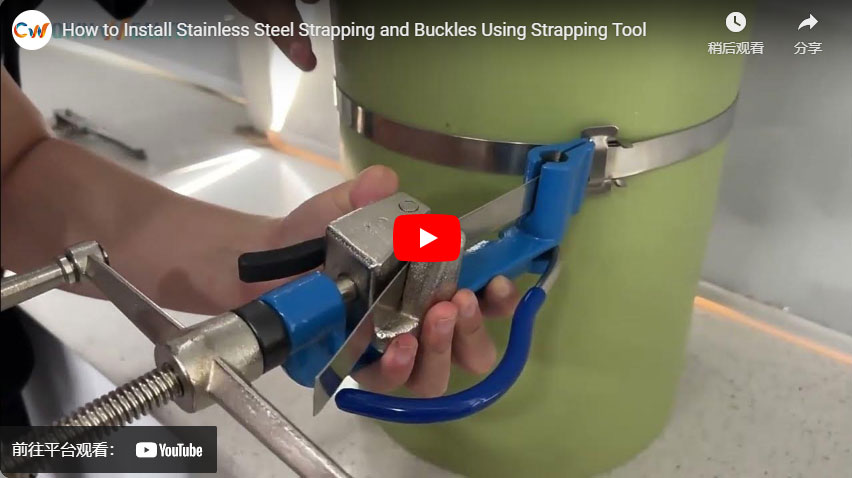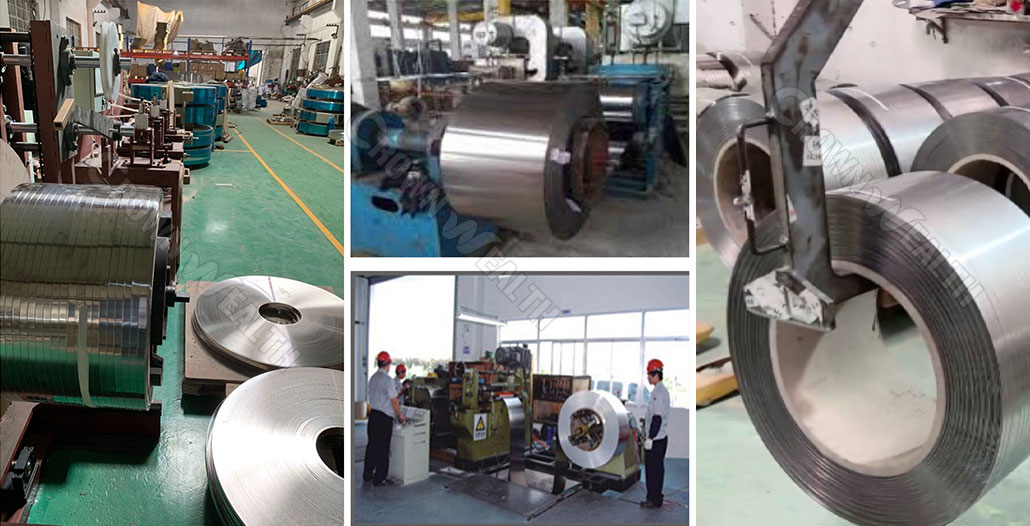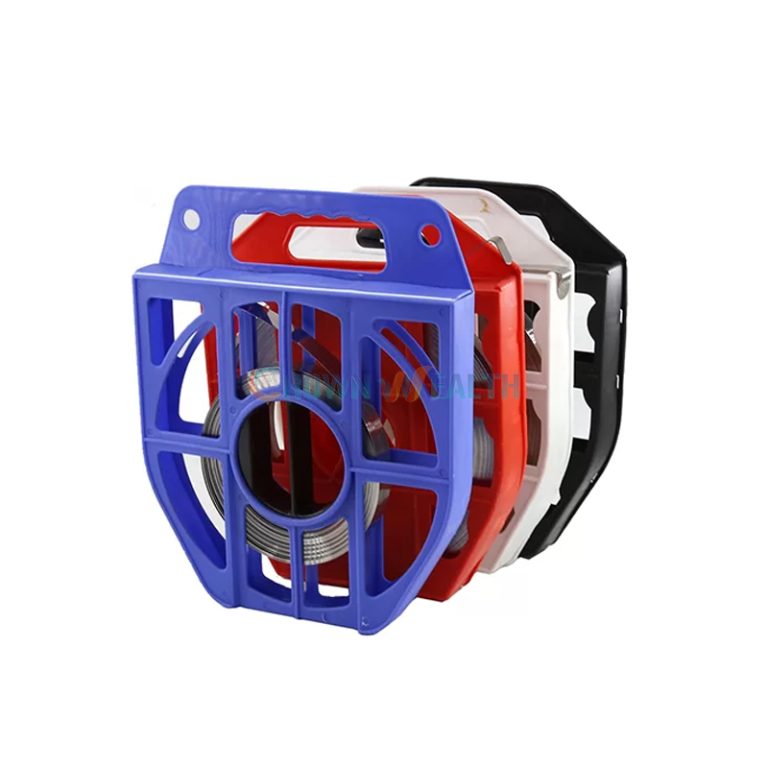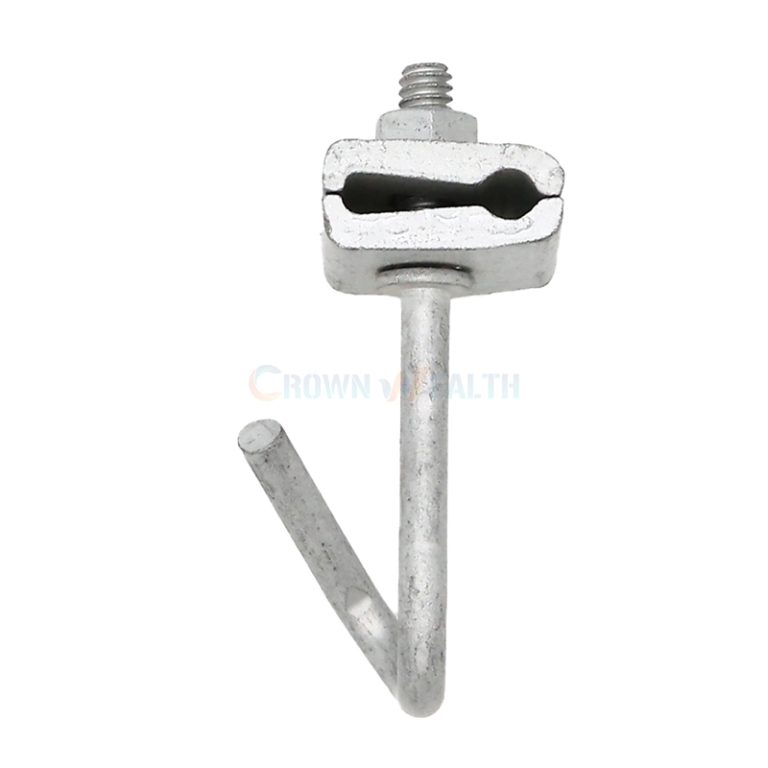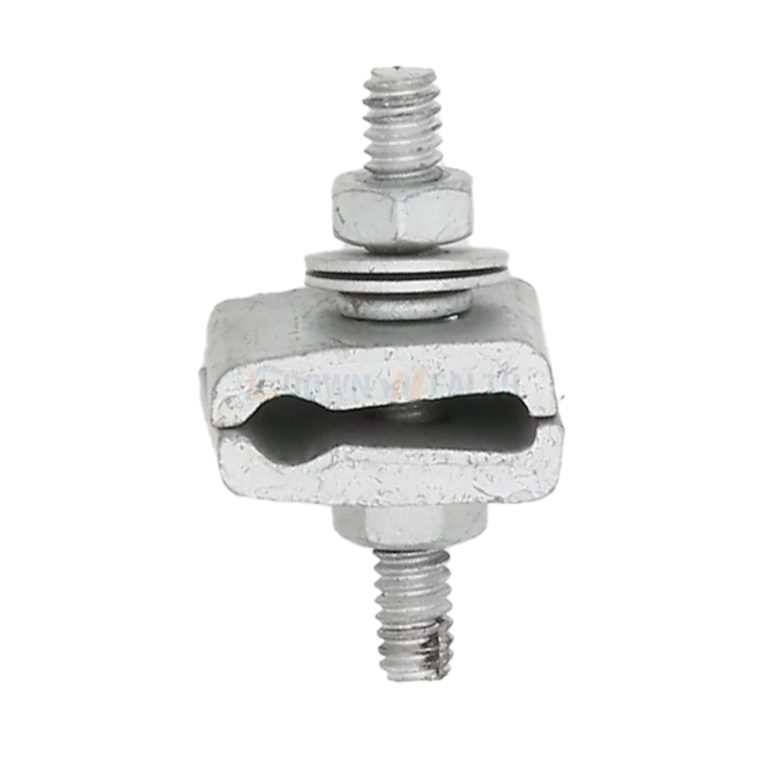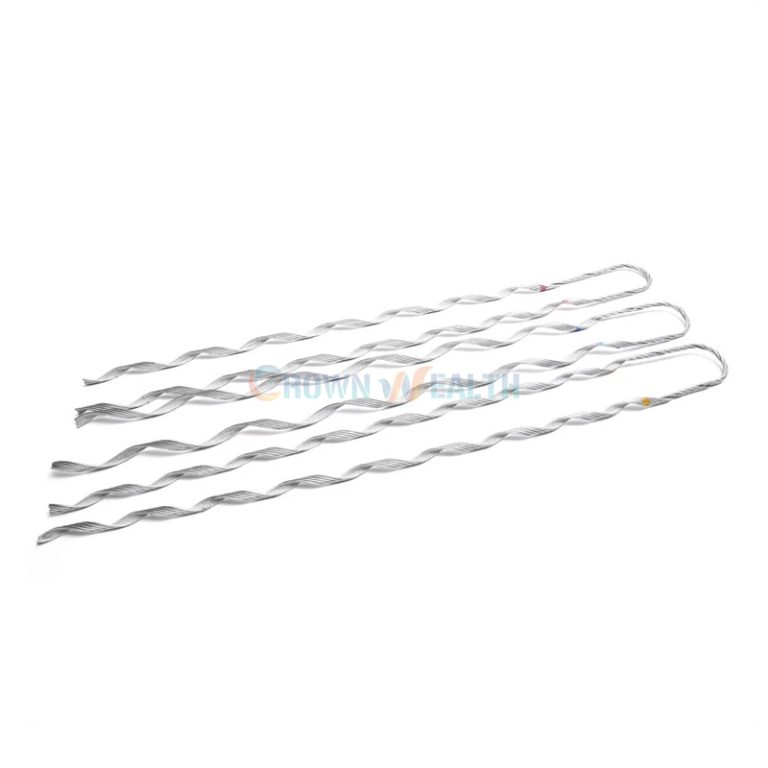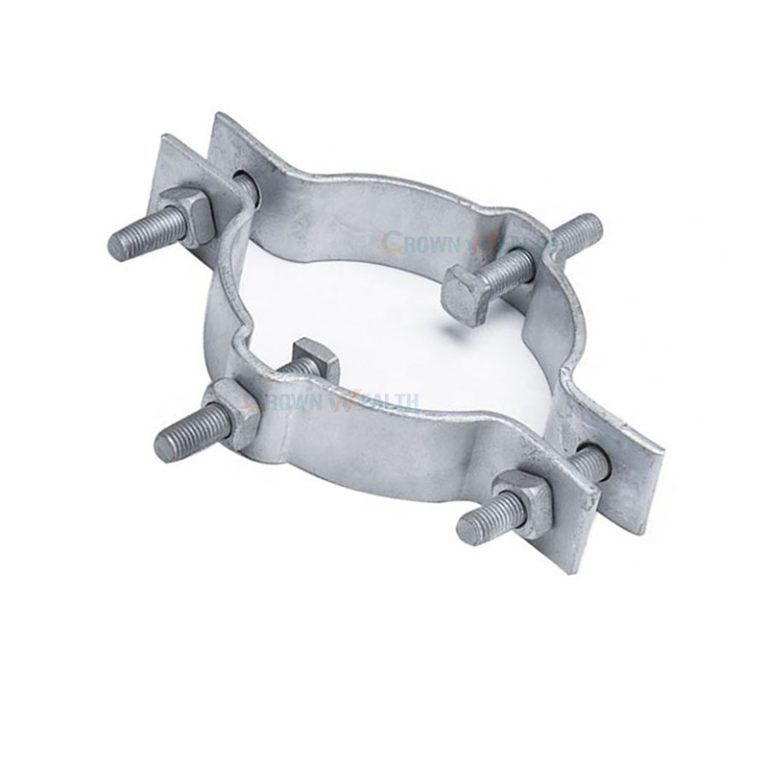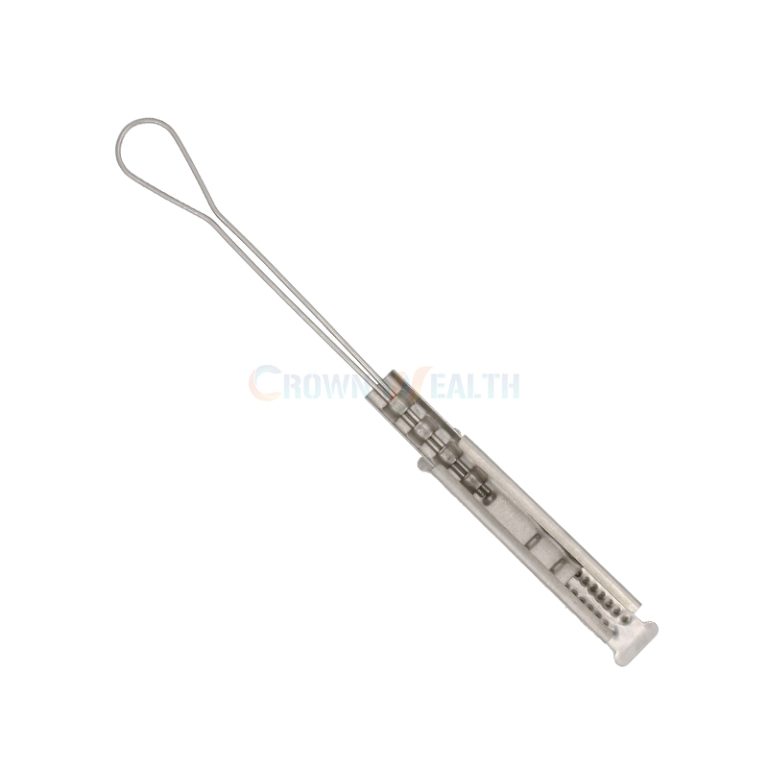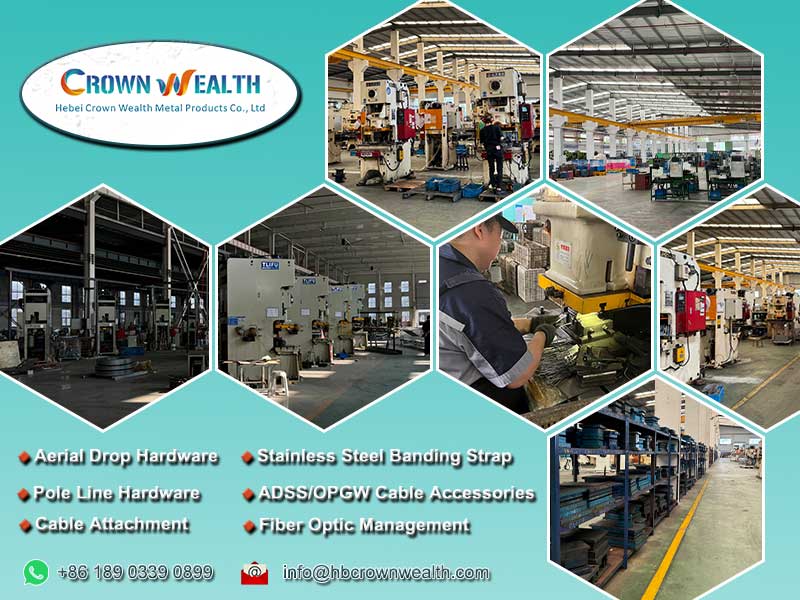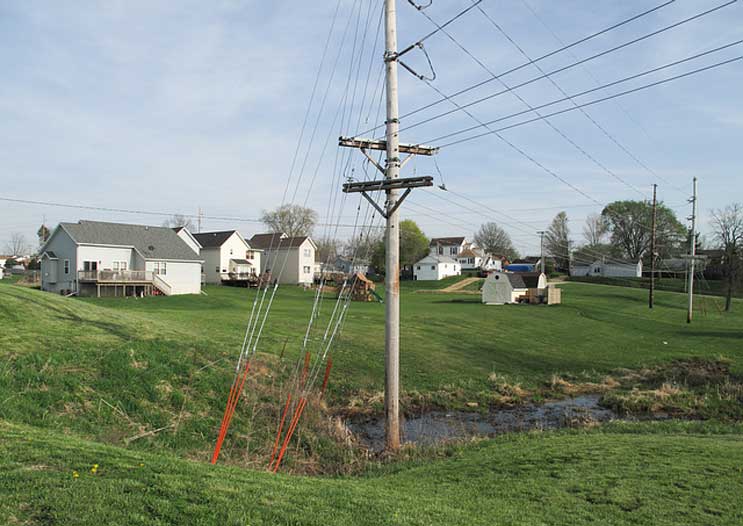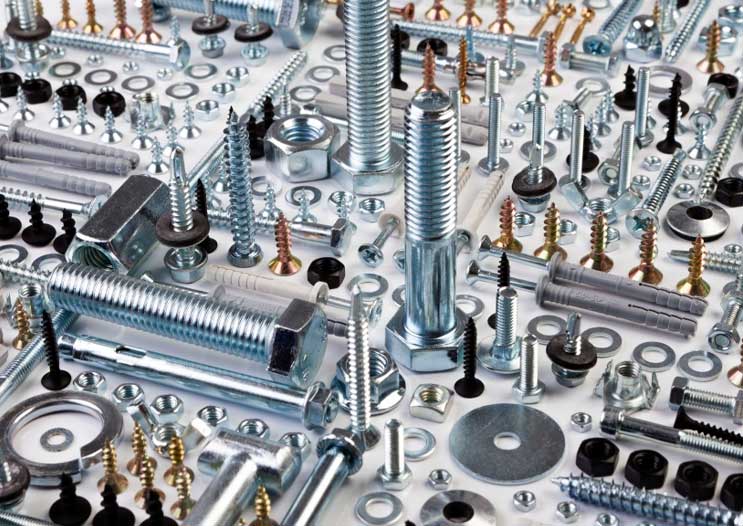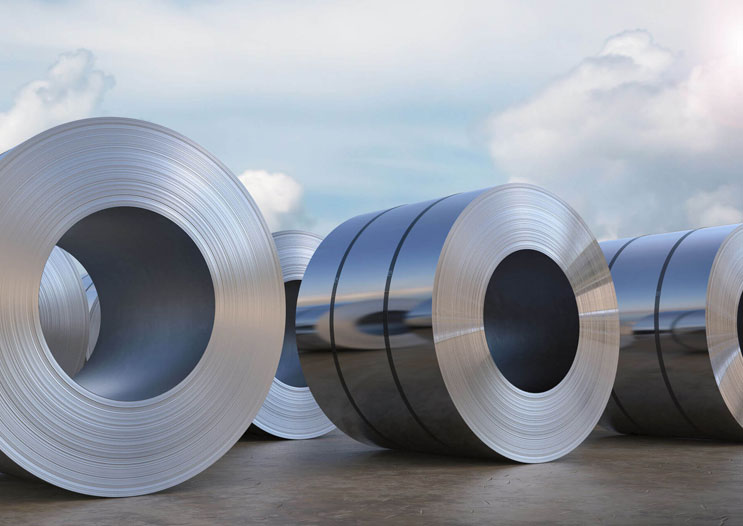Do you need to secure brackets, signs boards, and traffic control devices on utility poles or transmission line poles? Even in marine or other corrosive environments, the original fastening will be maintained. When some UV-resistant plastic products can’t meet your needs, stainless steel banding will be your new solution. This article will help you understand the stainless steel banding material, how to install it, and how to select stainless steel banding suppliers etc.
Table of Contents
ToggleWhat is Stainless Steel Banding?
Stainless steel banding is also known as stainless steel strapping, stainless steel banding strap, steel strapping, and steel banding. Stainless steel banding is used to wrap around various objects or pole hardware accessories, securing them in their intended positions. It is generally made from different alloy elements of stainless steel, with the material selected based on the environment where the banding will be used, such as prolonged exposure to high temperatures, high humidity, or other harsh corrosive environments.
The width, thickness, and length of stainless steel banding vary. Common widths are 1/2″, 5/8″, and 3/4″. The typical thicknesses are 0.6mm, 0.7mm, and 0.76 mm, and lengths are usually 30m or 50m. Hebei Crown Wealth offers customizable options, where thickness, width, length, and material can all be tailored to meet specific needs. We have advanced equipment to provide short lead times for our customers. Additionally, we offer stainless steel buckles, stainless steel banding tools and banding bracket.
Stainless Steel Banding History and Discovery
Stainless steel is a ubiquitous material, and it’s hard to imagine what the world would be like without it.
Around 1794, French chemist Louis Vauquelin discovered how to isolate chromium, the key alloy element in stainless steel.
In 1913, Harry Brearley, in an effort to solve the problem of gun barrel erosion, added 12.8% chromium to iron, creating a metal that was both corrosion-resistant and rust-proof.
This stainless steel was quickly improved upon, and the first American patent for a martensitic stainless steel alloy was registered in 1919 by inventor Elwood Haynes.
In the 1950s and 1960s, the addition of nickel alloy elements and advancements in techniques such as hot rolled strips, continuous casting, cold rolling, and argon oxygen decarburization further enhanced the qualities of stainless steel. Stainless steel grades are categorized into four main types: martensitic, austenitic, duplex, and ferritic.
Today, stainless steel comes in various grades and specifications, with equally diverse applications. Common stainless steel banding is generally made from austenitic stainless steel.
What are the Main Components of Stainless Steel Banding?
The main components of stainless steel banding are alloy elements such as chromium (Cr), nickel (Ni), and carbon (C), with 18-30% Cr and 6-20% Ni as their major alloying additions. Later, additional alloy elements such as molybdenum (MO), sulfur (S), selenium (Se), niobium (Nb), and titanium (Ti) were added to improve the performance of stainless steel.
- Adding Mo improves pitting and crevice corrosion resistance.
- Reducing C content adding Ti, Nb reduces intergranular corrosion tendencies.
- Adding Ni and Cr enhances high-temperature oxidation resistance and strength.
- Adding Ni improves resistance to stress corrosion.
- Adding S and Se improves the machinability and surface precision of components.
What are The Common Grade Types of Stainless Steel Banding?
Regardless of the industry you are in, selecting the right stainless steel banding material is one of the fundamental factors that determine the overall functionality and practical benefits of a project. Two factors that cannot be overlooked when using stainless steel banding are the application environment and the properties of the material itself. The most common types of stainless steel banding are generally classified as Type 201, Type 304, Type 316, and Type 430. Below is a brief description of each grade to help you understand which type of stainless steel banding is best suited for your application.
201 Stainless Steel Banding
Type 201 stainless steel banding is cost-effective, primarily because a significant portion of nickel (Ni) is replaced by manganese (Mn). Due to the lower nickel content, its strength and corrosion resistance are reduced, but it can still maintain a clean and attractive appearance under general atmospheric conditions. Type 201 stainless steel banding is easy to process, reducing the wear on banding tools, but it is not suitable for high-temperature industrial applications where oxidation might occur. The relatively low cost of Type 201 makes it ideal for budget-conscious projects. It can be used for architectural decoration and securing signage boards on utility poles.
304 Stainless Steel Banding
Type 304 stainless steel banding is one of the most commonly used stainless steel materials, containing 18% chromium (Cr) and 8% nickel (Ni). It has excellent corrosion resistance and mechanical properties and is widely used in various industrial and civilian fields. It has good resistance to most acids, alkalis, and salt solutions, making it suitable for a variety of harsh corrosive environments. It also performs well at high temperatures, up to 1000-1200 degrees Celsius. Type 304 stainless steel banding is an excellent choice for securing insulating material hardware or brackets on utility poles.
316 Stainless Steel Banding
Type 316 stainless steel banding is a type of stainless steel that includes the addition of molybdenum (Mo), enhancing its resistance in corrosive environments, especially those containing chlorides. In addition to 18% chromium (Cr) and 8% nickel (Ni), it contains 2-3% molybdenum (Mo), significantly improving its resistance to pitting and crevice corrosion. Type 316 stainless steel banding is suitable for high-demand applications, widely used in marine facilities and chemical and pharmaceutical equipment, offering superior corrosion resistance compared to Type 304 and Type 201 stainless steel banding. If you have special requirements for the strength and toughness of stainless steel banding, then Type 316 is your best choice.
430 Stainless Steel Banding
Type 430 stainless steel banding is a ferritic stainless steel, and has lower oxidation resistance at high temperatures. Type 430 stainless steel has no nickel content and contains 17% chromium (Cr), making it relatively cost-effective. It performs well in general mild corrosive environments but is not suitable for high-chloride or high-acidity environments. If your requirements for the mechanical properties of the banding are not very high, the lower-cost Type 430 stainless steel banding is also a viable option.
What is The Difference Between SS 304 vs SS 201 and SS 316?
Composition
Type 201 contains a high amount of Mn, Type 304 contains more Cr and Ni, Type 316 The main chemical difference is the inclusion of Mo. Both Type 304 and Type 316 are resistant to rust.
|
Composition of Stainless Steel Banding |
||||||||
|
Grade |
C |
Cr |
Ni |
Si |
Mn |
Mo |
P |
S |
|
SS201 |
≤0.15% |
16%-18% |
3.5%-5.5% |
≤0.75% |
≤5.5% |
– |
≤0.06% |
≤0.03% |
|
SS304 |
≤0.07% |
18%-20% |
8%-10.5% |
≤1% |
≤2% |
– |
≤0.045% |
≤0.03% |
|
SS316 |
≤0.08% |
16%-18% |
10%-14% |
≤1% |
≤2% |
2%-3% |
≤0.045% |
≤0.03% |
Mechanical Properties
The tensile strength of Type 201 stainless steel banding is relatively low. Type 304 and Type 316 Both have higher tensile strength, allowing them to withstand greater tension.
|
Properties of Stainless Steel Banding |
|||||
|
Grade |
Tensile Strength |
Yield Strength |
Elongation |
Hardness |
Density |
|
SS201 |
≥515MPa |
≥275MPa |
55%-60% |
HRB<183N/mm²(MPa) |
7.93g/cm³ |
|
SS304 |
≥520MPa |
≥205MPa |
≥40% |
HRB≤92/mm²(MPa) |
7.93g/cm³ |
|
SS316 |
≥520MPa |
≥205MPa |
≥40% |
HRB≤90/mm²(MPa) |
7.98g/cm³ |
Corrosion Resistance
Type 201 performs well and remains stable in mild environments but is not suitable for highly corrosive environments. Type 304 has good resistance to most acids, alkalis, and salt solutions, making it suitable for various corrosive environments. Type 316 is particularly suitable for marine environments and industrial environments containing chlorides. It offers superior corrosion resistance compared to Type 304 and Type 201.
Stainless steel banding is a versatile and durable material. When choosing the right grade for your application, if you need a high level of corrosion resistance and durability, Type 304 and Type 316 will be your best choices. If you are cost-constrained, then Type 201 might be more suitable for your application.
Stainless Steel Banding Manufacturing Processes
Stainless steel banding manufacturing involves several key processes, each of which affects the quality and performance of the final product.
– Stainless steel banding is usually made from high-quality stainless steels such as 201, 304, 316, and 430. The raw stainless steel is inspected to ensure it meets the required standards and specifications.
– The steel band undergoes processes such as hot rolling, descaling, annealing, pickling, and cold rolling to achieve the final required thickness and surface finish. This process enhances the strength and hardness of the steel.
– Use a stainless steel banding machine to split and trim the steel bands to your required specifications, ensuring they are smooth and burr-free, which is crucial for safe handling and application.
– The finished steel band is then wound into coils of the specified length. These steel bands are carefully packaged to prevent damage during transportation and storage.
– Throughout the manufacturing process, we strictly implement quality control requirements to ensure the stainless steel banding meets industry standards and your required specifications.
What are The Application of Stainless Steel Banding?
Stainless steel banding is renowned for its durability, strength, and corrosion resistance, making it has been widely used. Here are some primary applications:
- Construction and Infrastructure: Cable management, piping systems, scaffolding.
- Electrical and Telecommunications: Antenna installation, utility poles.
- Automotive and Transportation: Exhaust systems, cargo securing.
- Marine and Offshore: Rigging, areas prone to marine corrosion.
- Signage and Traffic Control: Sign installation, barrier and guardrail installation.
- Agriculture and Fencing: Securing fence posts and wires in agricultural settings, fastening components in irrigation systems.
- Industrial Applications: HVAC systems, securing machinery and equipment in industrial facilities.
- Utilities and Municipalities: Securing streetlights and utility poles.
- Energy and Power Generation: Securing solar panels to mounting structures.
- Petrochemical and Chemical Processing
Stainless steel banding is generally used for bundling and securing items for various purposes, and you can also choose it for household and DIY projects
How is Stainless Steel Banding Used for Industrial Insulation?
In heating, ventilation, and air conditioning (HVAC), stainless steel banding is used to support insulation on pipes and air handling units. It helps to maintain the integrity of the insulation and ensure proper positioning, thereby ensuring the efficient operation of the system. The steel band is wrapped around the pipe or equipment and securely tightened using stainless steel buckles or clips to secure the insulation in place. This is crucial in environments where temperature control is critical.
Advantages and Disadvantages of Stainless Steel Banding
Advantages of Stainless Steel Banding:
- Corrosion Resistance
- Strength and Durability
- High Temperature Resistance
- Aesthetic Appearance
- Easy Installation
- Completely inherit the benefits of stainless steel, wide-ranging applications in various industries and applications, providing solutions for your different needs.
Disadvantages of Stainless Steel Banding:
Compared with other materials, stainless steel banding may be more expensive, which can increase the overall project cost.
How to Install and Usage Stainless Steel Banding?
Step-by-Step Installation Guide
Step 1. Prepare a stainless steel band (estimate the length needed for your application), stainless steel buckles, banding tool, gloves (recommended for safety), other tools (choose according to buckle type, such as hammer).
Step 2. Insert one end of the stainless steel band into the buckle. Ensure the direction of the buckle is correct (the smooth side of the stainless steel buckle should be against the fixed object).
Step 3. Wrap the stainless steel band around the object to be secured in your desired manner. Thread the free end of the stainless steel band through the stainless steel buckle, pull the free end tight with your hand, and secure it at the desired position.
Step 4. Use the banding tool to further tighten the band. Follow the operating stainless steel banding tool instructions to tighten the band securely around the object.
Step 5. Once the band is tightened to the desired tension, fold the free end back onto itself to lock the buckle.
Step 6. Use the banding tool to cut off the excess band, leaving about 1 inch protruding from the stainless steel buckle. Secure the stainless steel buckle.
Step 7. Inspect the installed band to ensure it is securely fastened.
*Safety Tip: When handling stainless steel banding, be sure to wear gloves to avoid cuts and protect against sharp edges scratching.
Stainless Steel Banding Best Practices Installation Video
How to Choose The Best Stainless Steel Banding Manufacturer?
When selecting the best stainless steel band manufacturer, you can ask the potential manufacturer the following questions:
- What stainless steel grades do you produce, and can you provide certifications for your products or materials? This helps understand the range of stainless steel materials the supplier operates with and their qualifications.
- Can you customize strapping products to meet our specific requirements? Inquire about the supplier’s product range and customization capabilities to meet your application needs.
- What quality control measures do you implement? For example, do you conduct testing for mechanical properties, corrosion resistance, and other relevant factors? This helps understand the basic quality of the supplier’s products.
- How do you handle customer support and technical assistance? Inquire about the supplier’s after-sales service.
- Can you provide references or case studies of similar projects? This helps assess the supplier’s capabilities.
- What is the lead time for orders? How do you handle logistics and delivery? This helps understand the supplier’s manufacturing capacity.
It’s also important to consider the supplier’s experience and reputation in the industry, as well as their ability to offer competitively priced products while maintaining quality and service. By asking these questions, you can screen out reliable stainless steel banding manufacturers.
Hebei Crown Wealth is a professional stainless steel band manufacturer and supplier, offering the best factory prices. We have a quality management system certified by ISO and CE certification. We have established long-term stable partnerships with well-known distributors in the United States, and our stable, high-quality products and comprehensive services have received praise from customers.
Stainless Steel Banding Good for the Environment
At the end of its lifecycle, stainless steel banding can be 100% recycled and reprocessed into new stainless steel products without any loss in quality. The high recyclability, durability, rust and wear resistance of stainless steel banding reduce the need for frequent replacements and minimize maintenance requirements, making it an environmentally friendly choice. The long life and corrosion resistance of stainless steel banding help reduce waste and resource consumption, while modern production methods and the use of recycled materials reduce its overall environmental footprint. The stainless steel industry employs a closed-loop recycling system, where old stainless steel is collected and reused, reducing the demand for raw ore materials and contributing to more sustainable and eco-friendly practices.
Conclusion
Whether in the electrical and telecommunications industry, automotive, aerospace, marine facilities, chemical and pharmaceutical industries, new energy sector, or other fields, stainless steel banding is ubiquitous and widely used. It boasts excellent strength and corrosion resistance, making it ideal for use in harsh environments. Hebei Crown Wealth is a professional manufacturer and supplier of stainless steel banding located in China. We offer stainless steel banding in various grades, strengths, and alloys, as well as banding tools and stainless steel buckles, so you can find the best stainless steel products for your application. If you have any questions about stainless steel banding please contact us.
FAQ
Why is Stainless Steel Called?
Stainless steel is called “stainless” because of its outstanding resistance to rust, corrosion and staining, primarily due to its chromium alloying element. This unique property, combined with its durability, aesthetic appeal, and versatility, makes it a highly valued material in numerous industries and applications.
What is the Stainless Steel Banding made of?
Stainless steel banding is primarily made from grades of stainless steel such as Type 201, Type 304, Type 316, and Type 430, each with its unique composition and properties tailored for different applications. The key alloying elements include chromium, nickel, molybdenum, manganese, and carbon, which together impart the stainless steel’s characteristic durability, corrosion resistance, and strength.
Is Stainless Steel a Good Metal?
Yes, stainless steel is a good metal with a wide range of beneficial properties, including corrosion resistance, strength, hygiene, aesthetic appeal, heat resistance, and recyclability. These advantages make it a preferred material in the electrical and telecommunications industry, various industries, from construction and automotive to food processing and healthcare.
Is Steel Banding 100% Stainless?
Yes, the stainless steel banding produced by Hebei Crown Wealth is made from high-quality 201, 304, and 316 stainless steel. Our high-quality steel band products are certified by ISO for quality management systems and by CE. You can rest assured that Hebei Crown Wealth provides 100% stainless steel, and each grade of stainless steel has its own advantages and characteristics.
Does Stainless Steel Rust?
– 201 Stainless Steel: Good corrosion resistance, but less durable in harsh environments.
– 304 Stainless Steel: Strong corrosion and rust resistance in various environments.
– 316 Stainless Steel: Excellent corrosion resistance, especially in marine and corrosive chemical environments.
While stainless steel has excellent rust and corrosion resistance, it still requires proper maintenance and care in harsh environments to prolong its lifespan and performance.
Features of Stainless Steel Banding
- High Corrosion Resistance, Strength, and Durability
- Extremely Wide Application Range
- Various Sizes Available
- Aesthetic and Easy to Install
- Cost-effective Over Long-term Use
- 100% Recyclable
Which regions are leading the Stainless Steel Band Market?
Europe: UK, Russia, Germany, France, Italy, Turkey
America: United States, Canada, Mexico, Brazil, Argentina, Columbia
Middle East and Africa: Saudi Arabia, UAE, Egypt, Nigeria, South Africa
Asia-Pacific: China, Australia, Thailand, India, Japan, Korea, Indonesia, Philippines, Malaysia, Vietnam
Stainless Steel Banding & Accessories
– Stainless Steel Sign Banding
– Stainless Steel Edge Banding
– Stainless Steel Strapping Fastenal
– Stainless Steel Banding Kit
– Large Stainless Steel Band Clamps
– Stainless Steel Banding Ring

